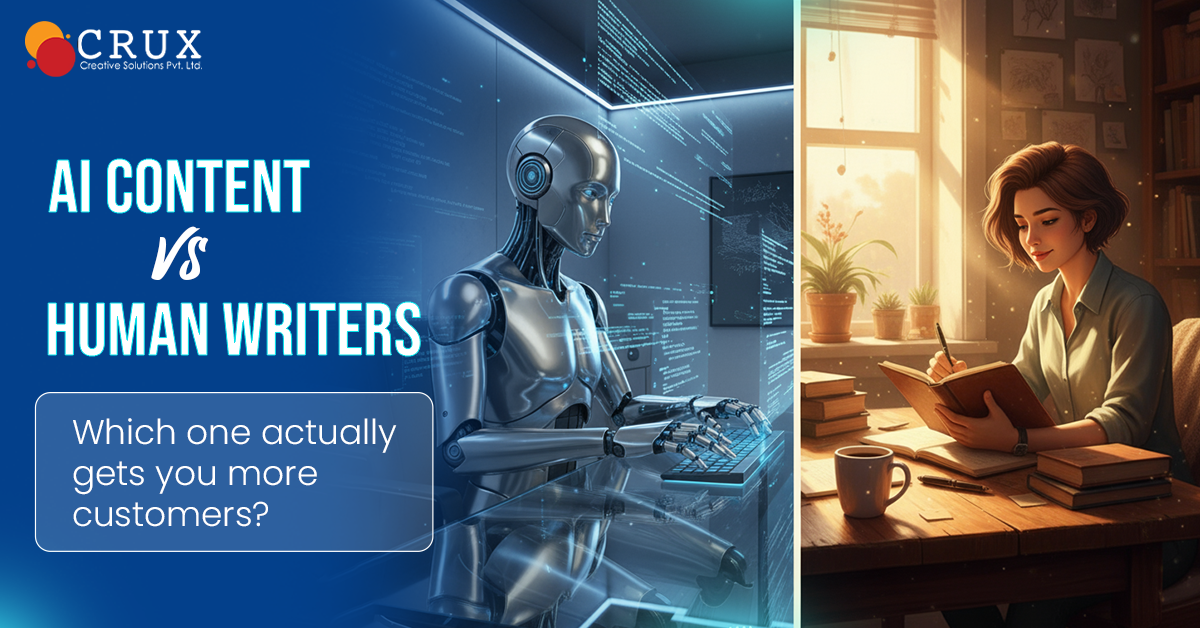
Server-Side vs. Client-Side Rendering: Which One is Better for SEO?
Server-side rendering generally provides better SEO results through immediate content availability, faster loading speeds, and reliable search engine processing. Client-side rendering offers superior user experiences for interactive applications but requires additional optimization for search visibility. Most content-driven websites benefit from server-side rendering or hybrid approaches that combine both methods strategically. The choice depends on balancing SEO priorities with user experience needs and technical constraints.
The battle between server-side rendering and client-side rendering has shaped web development decisions for years, but nowhere is this choice more critical than when it comes to search engine optimization. As websites become increasingly dynamic and interactive, developers face a fundamental question: should content be generated on the server before reaching users, or should browsers handle the heavy lifting after pages load?
This decision affects everything from how quickly your pages appear in search results to how well they rank for competitive keywords. Understanding the nuances of each approach helps you make informed choices that balance user experience with search visibility.
Understanding the Fundamental Difference
Server-side rendering means your web server generates complete HTML pages before sending them to browsers. When someone visits your website, the server processes all the data, builds the full page content, and delivers ready-to-display HTML. This approach mirrors how websites worked in the early days of the internet, but modern implementations are far more sophisticated.
Client-side rendering takes the opposite approach. Your server sends a minimal HTML shell along with JavaScript code that builds the page content after it reaches the browser. Users initially see a loading screen or blank page while their browser downloads and executes the necessary code to construct the final page.
The distinction might seem purely technical, but it has profound implications for how search engines discover, crawl, and rank your content. Search engine bots behave differently than human users, and these behavioral differences make rendering choice crucial for SEO success.
Each approach offers distinct advantages and creates specific challenges that affect not just search engine visibility, but also user experience, development complexity, and long-term maintenance requirements.
How Search Engines Process Different Rendering Methods?
Search engines have evolved significantly in their ability to handle JavaScript and client-side rendered content, but they still strongly prefer receiving complete, ready-to-read HTML pages. When search engine crawlers encounter server-side rendered pages, they can immediately access all content, understand page structure, and move on to indexing.
Google's crawling process involves multiple stages that affect how different rendering methods perform. Initially, crawlers fetch and analyze HTML content quickly. JavaScript processing happens later in a separate queue, which can delay indexing of client-side rendered content by days or weeks.
This timing difference becomes crucial for competitive markets where being indexed quickly can mean the difference between capturing traffic and losing it to faster competitors. Server-side rendered pages enter search results almost immediately, while client-side rendered pages might wait in processing queues.
Search engines also allocate limited resources to each website during crawling sessions. Complex JavaScript execution consumes more of these resources, potentially reducing how many pages get crawled during each visit. Server-side rendered sites typically get more comprehensive crawling coverage.
The reliability factor also matters significantly. If JavaScript fails to execute properly due to browser compatibility issues, network problems, or coding errors, client-side rendered pages might appear completely blank to search engines. Server-side rendered pages remain accessible even when JavaScript fails.
Server-Side Rendering: The SEO Champion
Server-side rendering delivers immediate SEO advantages that are hard to match with client-side alternatives. Every page exists as complete HTML from the moment search engines access it, eliminating any uncertainty about content availability or processing delays.
Page loading speeds benefit dramatically from server-side rendering. Users see content immediately upon page load, without waiting for JavaScript to download and execute. Since page speed directly influences search rankings, this performance advantage translates into better SEO results.
Meta tags, structured data, and other SEO elements work reliably with server-side rendering. Search engines can access this information immediately without depending on JavaScript execution, ensuring that important SEO signals reach search algorithms consistently.
Social media sharing also works more reliably with server-side rendered pages. When someone shares your content on platforms like Facebook or Twitter, these platforms can immediately access your page titles, descriptions, and images without executing JavaScript.
The predictability of server-side rendering makes SEO optimization more straightforward. You can test exactly what search engines will see, debug issues more easily, and implement advanced SEO techniques with confidence that they'll work consistently.
However, server-side rendering does introduce complexity in development and hosting. Servers need more processing power to generate pages dynamically, and caching strategies become more important for maintaining performance at scale.
Client-Side Rendering: User Experience Focus
Client-side rendering excels at creating smooth, app-like user experiences that keep visitors engaged. Once the initial JavaScript loads, navigation between pages feels instantaneous since only data needs to be fetched rather than entire new pages.
Interactive features work more naturally with client-side rendering. Real-time updates, dynamic content changes, and complex user interfaces are easier to implement when the browser handles all rendering logic.
Development workflows often favor client-side rendering for teams building complex applications. Separating front-end and back-end development allows for more specialized team structures and can accelerate development timelines.
The main SEO challenge with client-side rendering lies in the additional complexity it introduces. Search engines must successfully execute JavaScript to access content, and this process doesn't always work perfectly.
Modern search engines have improved their JavaScript processing capabilities significantly, but client-side rendering still requires careful implementation to achieve good SEO results. Techniques like prerendering, dynamic rendering, or hybrid approaches often become necessary.
Performance optimization becomes more critical with client-side rendering. Large JavaScript bundles can slow initial page loads significantly, negatively impacting both user experience and search rankings.
The Hybrid Approach: Best of Both Worlds
Many successful websites now use hybrid rendering strategies that combine server-side rendering for SEO-critical pages with client-side rendering for highly interactive features. This approach lets you optimize different parts of your site for their specific requirements.
Static site generation represents one popular hybrid approach. Marketing pages, blog posts, and other content-heavy pages get pre-rendered as static HTML, while user dashboards and interactive features use client-side rendering for better functionality.
Progressive enhancement offers another hybrid strategy. Pages start with server-side rendered HTML that works immediately, then JavaScript enhances the experience with additional interactivity after loading. This ensures both search engines and users get optimal experiences.
The key to successful hybrid implementation lies in understanding which pages need immediate search engine access versus which pages prioritize user interaction. Landing pages, product descriptions, and blog content typically benefit from server-side rendering, while user account areas and complex tools work better with client-side rendering.
Performance Implications That Affect SEO
Core Web Vitals have become crucial SEO ranking factors, making rendering choice directly impact search performance. Server-side rendering typically provides better Largest Contentful Paint scores since content appears immediately, while client-side rendering can struggle with initial loading metrics.
First Input Delay measurements often favor server-side rendered pages because the main thread isn't blocked by extensive JavaScript execution during initial page load. Users can interact with content more quickly, improving both user experience and SEO metrics.
Cumulative Layout Shift problems are easier to prevent with server-side rendering since page layouts are determined before content reaches browsers. Client-side rendered pages risk layout shifts as different content sections load and render asynchronously.
Bandwidth considerations also affect SEO indirectly. Server-side rendered pages often require less initial data transfer since they don't need large JavaScript frameworks to display basic content. This benefits users on slower connections and can improve engagement metrics that influence rankings.
Caching strategies work differently for each approach. Server-side rendered content can be cached at multiple levels, including CDNs and browser caches, while client-side rendered applications often require more sophisticated caching strategies to achieve similar performance benefits.
Real-World Implementation Considerations
Choosing between rendering approaches requires evaluating your specific content types, user needs, and technical constraints. E-commerce sites often benefit from server-side rendering for product pages and category listings, while using client-side rendering for shopping carts and user accounts.
Content management becomes more complex with client-side rendering. Content creators need to understand how their changes affect SEO, and preview systems must accurately represent what search engines will see.
Development team expertise influences implementation success significantly. Server-side rendering requires full-stack development skills, while client-side rendering can be implemented by front-end specialists. However, making client-side rendering SEO-friendly often requires back-end knowledge anyway.
Hosting and infrastructure costs differ between approaches. Server-side rendering requires more server processing power, while client-side rendering shifts computational load to users' devices but may require additional services for SEO optimization.
Maintenance complexity varies depending on your specific implementation. Server-side rendered applications often have more straightforward debugging processes for SEO issues, while client-side rendered applications may require specialized tools and expertise to diagnose search engine visibility problems.
Working with Professional Development Teams
Many businesses discover that implementing effective rendering strategies requires expertise that spans both technical development and SEO knowledge. The intersection of these specialties often benefits from professional guidance to avoid costly mistakes.
A skilled website development company in Gurgaon can evaluate your specific requirements and recommend rendering approaches that balance SEO needs with user experience goals. These teams understand how technical implementation choices affect search performance and can implement solutions that serve both users and search engines effectively.
The collaboration between development and marketing teams becomes crucial when rendering choices affect SEO strategy. The best digital marketing agency in Gurgaon can provide insights into how rendering decisions impact content marketing effectiveness and search visibility for your specific industry and target audience.
When evaluating development partners, look for teams that demonstrate understanding of both modern web development practices and SEO implications. The best SEO company in Gurgaon will have experience working with various rendering approaches and can guide implementation strategies that support long-term search success.
Future Trends in Rendering and SEO
The rendering landscape continues evolving as both web technologies and search engine capabilities advance. Edge computing is making server-side rendering more practical by reducing latency and processing costs through distributed computing resources.
Search engines are also improving their JavaScript processing capabilities, potentially reducing the SEO advantages of server-side rendering over time. However, the performance benefits of server-side rendering for user experience will likely maintain its SEO relevance.
New rendering approaches like streaming server-side rendering and partial hydration are emerging to address specific limitations of traditional approaches. These techniques aim to provide the SEO benefits of server-side rendering with the user experience advantages of client-side rendering.
The emphasis on Core Web Vitals and user experience metrics suggests that rendering choices will remain important for SEO success. Solutions that provide fast initial page loads while maintaining rich interactivity will likely dominate future web development strategies.
Making the Right Choice for Your Website
The decision between server-side and client-side rendering shouldn't be made in isolation from your broader business goals and technical constraints. Consider your primary content types, user behavior patterns, and long-term growth plans when evaluating options.
For most content-driven websites where SEO visibility drives business results, server-side rendering provides clear advantages that outweigh implementation complexity. The immediate indexing, reliable performance, and predictable SEO behavior make it the safer choice for search-dependent businesses.
Client-side rendering makes sense for web applications where user interaction is more important than search discovery, or for logged-in user areas where SEO isn't relevant. The enhanced user experience can justify the additional SEO complexity in these scenarios.
Hybrid approaches often provide the most practical solutions for complex websites that need both SEO performance and rich user interactions. The key is implementing these approaches thoughtfully rather than defaulting to the most familiar option.
Frequently Asked Questions
Q: Can I switch from client-side to server-side rendering without losing my current search rankings?
Switching rendering methods requires careful migration planning to preserve SEO value. Implement proper redirects, maintain URL structures, and monitor search console data during transitions. Rankings may fluctuate temporarily, but well-executed migrations typically improve long-term SEO performance within 2-3 months.
Q: Does server-side rendering always guarantee better SEO results than client-side rendering?
Server-side rendering provides better technical SEO foundations, but content quality, keyword targeting, and overall SEO strategy remain more important for rankings. Poor content with server-side rendering will underperform great content with properly implemented client-side rendering, though technical advantages do matter significantly.
Q: How much does implementing server-side rendering increase development costs compared to client-side rendering?
Server-side rendering typically increases initial development costs by 30-50% due to additional complexity and full-stack development requirements. However, reduced SEO optimization costs and better organic traffic performance often offset higher development investments within 6-12 months for content-driven websites.
Q: What's the minimum technical expertise needed to implement SEO-friendly client-side rendering?
SEO-friendly client-side rendering requires understanding of JavaScript frameworks, build tools, server configuration, and SEO principles. Teams need skills in prerendering, dynamic rendering, or static generation techniques. This typically requires senior-level development expertise or collaboration between front-end and back-end specialists.
Q: How do mobile search engines handle server-side versus client-side rendered content differently?
Mobile search crawlers have more limited processing resources and slower JavaScript execution compared to desktop crawlers. Server-side rendering provides more consistent mobile SEO performance, while client-side rendering faces additional challenges on mobile devices with slower processors and network connections.














